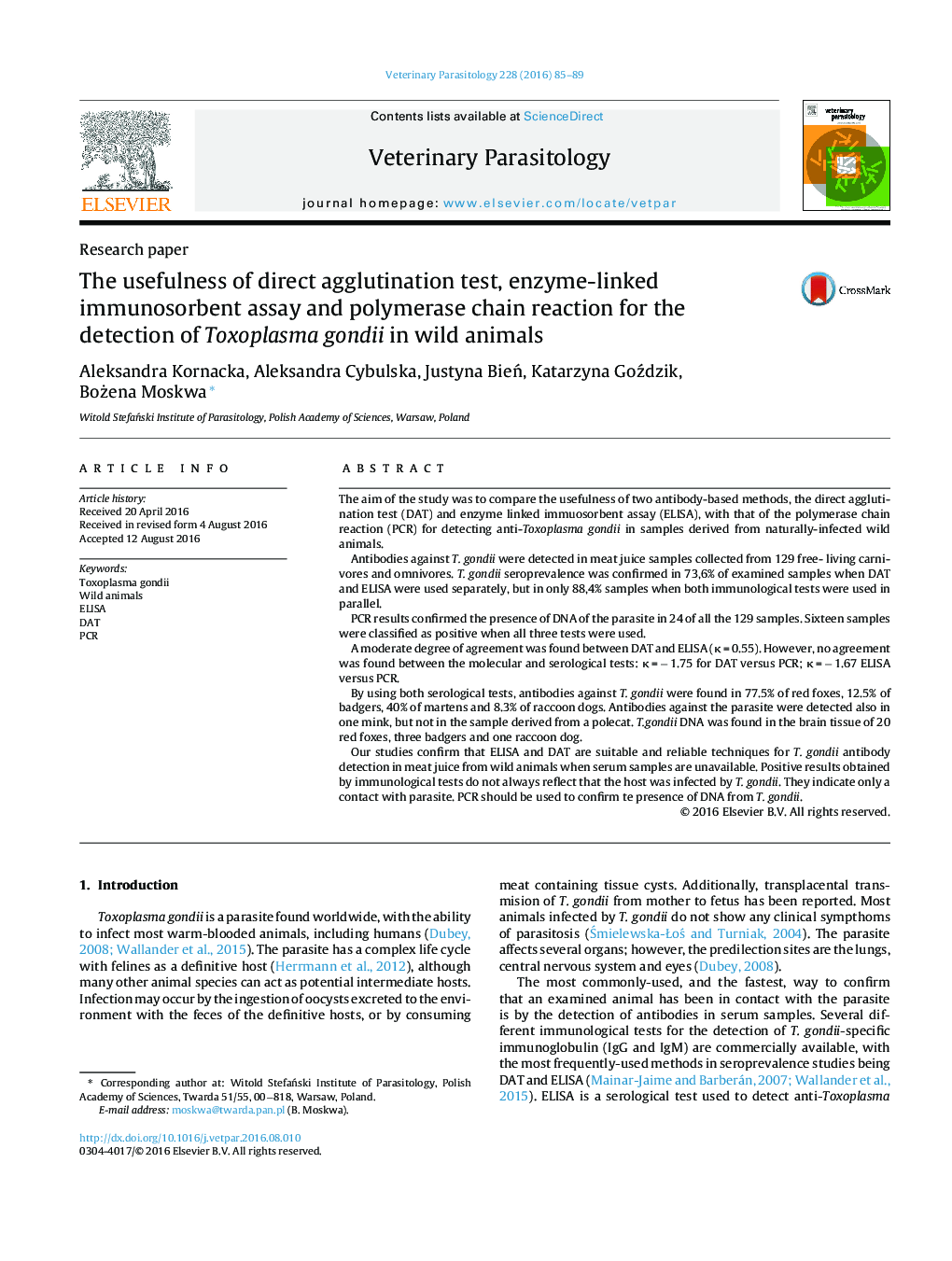| Article ID | Journal | Published Year | Pages | File Type |
|---|---|---|---|---|
| 5801949 | Veterinary Parasitology | 2016 | 5 Pages |
â¢We compared the usefulness of two antibody-based methods: DAT and ELISA, with that of PCR for detecting Toxoplasma gondii in samples from naturally-infected wild animals.â¢We confirmed that both ELISA and DAT are capable methods for quick screening of meat juice samples.â¢PCR should be used to confirm the presence of T. gondii DNA.
The aim of the study was to compare the usefulness of two antibody-based methods, the direct agglutination test (DAT) and enzyme linked immuosorbent assay (ELISA), with that of the polymerase chain reaction (PCR) for detecting anti-Toxoplasma gondii in samples derived from naturally-infected wild animals.Antibodies against T. gondii were detected in meat juice samples collected from 129 free- living carnivores and omnivores. T. gondii seroprevalence was confirmed in 73,6% of examined samples when DAT and ELISA were used separately, but in only 88,4% samples when both immunological tests were used in parallel.PCR results confirmed the presence of DNA of the parasite in 24 of all the 129 samples. Sixteen samples were classified as positive when all three tests were used.A moderate degree of agreement was found between DAT and ELISA (κ = 0.55). However, no agreement was found between the molecular and serological tests: κ = â 1.75 for DAT versus PCR; κ = â 1.67 ELISA versus PCR.By using both serological tests, antibodies against T. gondii were found in 77.5% of red foxes, 12.5% of badgers, 40% of martens and 8.3% of raccoon dogs. Antibodies against the parasite were detected also in one mink, but not in the sample derived from a polecat. T.gondii DNA was found in the brain tissue of 20 red foxes, three badgers and one raccoon dog.Our studies confirm that ELISA and DAT are suitable and reliable techniques for T. gondii antibody detection in meat juice from wild animals when serum samples are unavailable. Positive results obtained by immunological tests do not always reflect that the host was infected by T. gondii. They indicate only a contact with parasite. PCR should be used to confirm te presence of DNA from T. gondii.
